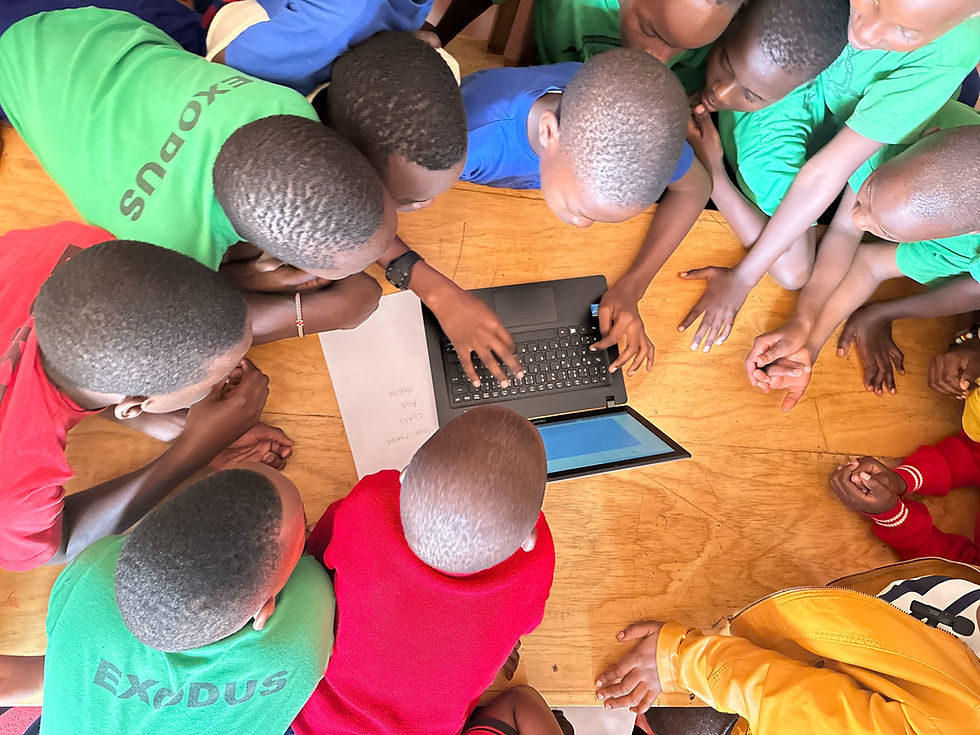5 Mindfulness Practices to Bring to Your Classroom.
- Jay Mawaka-Smith
- Aug 30, 2018
- 4 min read
As more and more adults embrace the practice of mindfulness, many of them eventually ask, “Why didn’t I learn this when I was a kid?”
There is plenty of evidence available now that demonstrates the value of teaching mindfulness to young people, and many of the benefits of mindfulness are skills and dispositions that are especially helpful in the context of education. Mindfulness practices help children improve their ability to pay attention, by learning to focus on one thing (e.g., breath, sound) while filtering out other stimuli. Mindfulness also provides kids with skills for understanding their emotions and how to work with them.
I’m not sure if there any other skills besides these — paying attention and regulating one’s emotions — that are more important for successful human functioning, let alone education!
As teachers and parents, we have many opportunities to introduce young people to these practices. The most fundamental way we do so is through our own attempts to cultivate mindfulness: to be present, to pay attention, and to be aware of our own emotions and responses.
We can also bring these practices into our classrooms, providing students with opportunities to pause, to pay close attention to their experience, and to reflect.

1. Begin with a Mindful Moment
For high school students, the school day is pretty busy! Science to math to history to PE to English to French, punctuated by the crazy state-fair midway chaos known as “passing time.” Even in elementary school, kids spend a lot of their day taking in information, responding to the environment, interacting with others, and otherwise just being “ON.” We rarely give them a moment to pause, settle their nervous system, and refocus their attention and energy on a new task.
At the beginning of class, or after a transition, you can take a mindful moment: invite kids to close their eyes (if they’re comfortable doing so), and take a few deep breaths. They can pay attention to breathing — what does it feel like when they breathe in and out? Or they can notice their thoughts — is their mind really busy or quiet right now?
2. Practice Mindful Listening
Mindful listening is one of the simplest ways to introduce mindfulness to kids, as it is often easier to focus on something more ‘concrete’ like sound; the instruction to “notice your breath” can be a bit abstract, especially for elementary students.
3. Take a Mindful Break
At the 2015 Education Minnesota conference, a middle school teacher shared the technique she used for mindfulness breaks in her class: at the beginning of each class, one student would get a bell. During that day’s lesson, the student would ring the bell when he or she felt the class needed a break (the teacher set the bell-ringing limit at twice during at 50-minute class).
When the student rang the bell, even if the teacher was mid-sentence, class would stop. In silence, everyone would stand up and stretch, and then sit down for 30 seconds or so of mindful breathing. Then the student who rang the bell would prompt students to silently think of something they were grateful for. And then the lesson would proceed.
This practice only takes a minute, and it gives students (and teachers) a much-needed break. Sometimes we are in such a hurry to get through a lesson (I know I’ve been there!) that we forget to allow a bit of a brain break to allow the information to “land.” Putting the students in control allows them to take ownership of the mindfulness practices in class, and it also gives the teacher valuable information about when students’ attention is waning.
4. Check in with Your Attention
A variation on the attention break above is to have the teacher announce a short “attention check.” You could do this in the middle of a lesson, or during the middle of independent or group work time. Ask students to pause and “check in with their attention.” Is their attention here, in class? Was their mind wandering? If so, where had their attention gone?
Emphasize that mind-wandering is completely normal and to be expected — it’s what minds do! The important thing is to notice what the mind is doing, and then to understand you now have a choice about where to direct your attention. We can’t force kids to pay attention, but the more we practice this “attention check-in,” the more skilled they will become at monitoring their own attention and redirecting it when necessary.
5. End with a Mindful Moment
Recently, a middle-school teacher at a school I’m working with shared how she has incorporated mindfulness into her lesson closure every day this school year:
At the end of class, she takes 3-5 minutes to have kids close their eyes and focus on their breath. She has them think of what they have learned and what they accomplished. She gives them quiet time to settle their nervous systems before their next class, and then ends with a positive statement about how hard they’ve worked, how proud she is of them, or how much she cares about them.
She said it’s had such a positive impact on her class, and the kids always remind her when it’s mindfulness time — if she forgets, they make sure to let her know she “owes” them mindfulness!
And that, my friend, is what they call “closure.”
Original article posted on :http://leftbrainbuddha.com/5-mindfulness-practices-bring-classroom/
Call to action.
Get to know more about our project or contribute to out fundraising campaign ? https://chuffed.org/project/lenoirfdn








Comments